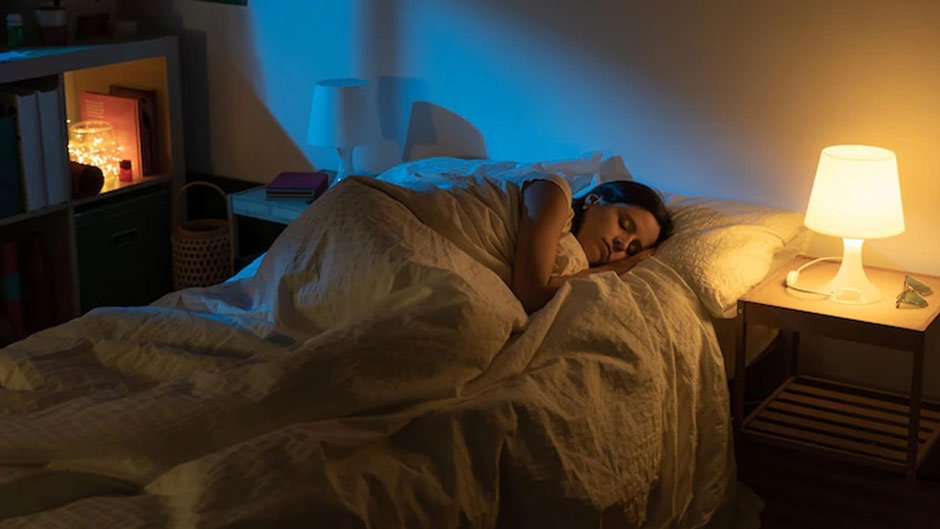
Lighting is more than just a way to brighten up a room; it directly impacts your mood, sleep quality, and even your body’s natural circadian rhythm. The type of light you surround yourself with can either calm your mind or disrupt your rest.
Understanding Circadian Rhythm and Light
The circadian rhythm is your body’s internal clock that tells you when to wake up, feel energized, and when to wind down for sleep. Natural daylight plays the most powerful role in regulating this cycle. When exposed to bright, cool-toned light during the day, your brain signals alertness. As the sun sets, softer and warmer light tones encourage melatonin production, helping your body prepare for rest.
This is why artificial lighting matters so much. The wrong choice of pendant lights or chandeliers—especially those with harsh, cold light—can trick your body into staying alert long past bedtime. In contrast, lighting fixtures such as kitchen pendant lamps, hallway lighting, or designer chandeliers with dimmable warm tones (around 2700K) can gently support a healthy circadian rhythm.
Creating Relaxing Spaces with the Right Lighting
Pendant lights crafted from natural materials such as timber or wood veneer bring warmth and character to any interior. Wood veneer pendants are especially distinctive, designed to diffuse light through their natural burl patterns.
The Serenitti pendant light, handcrafted from burl veneer, enhances interiors with its warm, sunset-inspired glow. Perfect for bedrooms and living areas, it encourages relaxation and restful sleep – making it both a striking design statement and a health-conscious choice for wellness-focused spaces.
Pendant Lights and Sleep Quality
Lighting influences more than aesthetics; it affects your mood, energy, and wellbeing.
For bedrooms, pendant lamps with warm tones are ideal for winding down. Pendant lights for kitchen islands, on the other hand, should be brighter to support energy and focus. This is where dimmable options become valuable. They give you flexibility to adjust brightness based on the time of day and the activity.
Kitchen island pendant lighting, for example, can be turned brighter during cooking or family gatherings, then dimmed in the evening when you want a more relaxed mood. Using pendant light kitchen island designs that focus light downward also helps reduce glare and eye strain, contributing to better sleep patterns later in the night.
The Role of Chandeliers in Relaxation
While pendant lights dominate kitchens and dining areas, chandeliers have always stood as symbols of elegance and atmosphere. A designer chandelier or modern chandelier is not only a striking centerpiece but also a mood-setter. Today’s modern chandeliers are crafted to deliver the perfect balance of brightness and warmth – without glare.
Imagine walking into a room illuminated by the soft, ambient glow of a modern chandelier. The atmosphere instantly feels calm and inviting, making it easier to unwind after a long day.
The Stella chandelier, handcrafted from natural timber and brass, is more than a lighting fixture – it is a sculptural masterpiece. Its diffused glow creates a captivating 3D effect, where the light source remains hidden, offering both comfort and sophistication. With its soft, evenly spread illumination, Stella truly stands out as a modern chandelier that combines design, function, and atmosphere in perfect harmony.
How Lighting Impacts Relaxation vs. Stimulation
Bright white or blue-toned lights stimulate alertness and are better suited for workspaces or daytime use. However, when used in kitchens or bedrooms during the evening, these lights can interfere with melatonin levels and disrupt sleep cycles. That’s why many lighting designers recommend switching to warm pendant lights or chandeliers after sunset.
Pendant lighting for a kitchen island or hanging lights in the hallway can serve dual purposes. During the day, you can brighten the room for productivity. In the evening, dimming the lights to a softer tone allows your brain to wind down naturally. This simple switch can make a noticeable difference in how quickly you fall asleep and how rested you feel in the morning.
Choosing the Right Fixtures for Your Home
If you’re designing or upgrading your home, think about how each space should feel at different times of day:
- Kitchen: Go for adjustable kitchen pendant lights or pendant lamp kitchen fixtures that can be bright for cooking but dim for late-night snacks.
- Dining Room: A pendant light that casts a warm glow creates a welcoming dinner environment.
- Living Room: Consider modern pendant lights or a chandelier with dimmable settings for entertainment versus relaxation.
- Hallways: Subtle hall lights or hallway lighting with warm tones keep the space inviting without overstimulation.
- Bedrooms: Focus on pendant lights hanging or lamps that offer warmth to encourage melatonin production and better sleep.
Final Thoughts
Lighting is a silent but powerful influence on your wellbeing. From kitchen island hanging lights to a modern chandelier in your living room, every choice affects not only aesthetics but also how your body rests and recovers. By selecting fixtures that provide warm tones and adjustable brightness, you can create a home environment that supports both productivity and relaxation.
